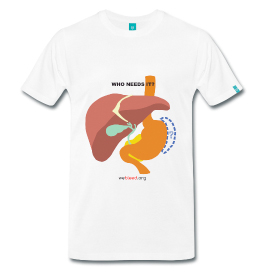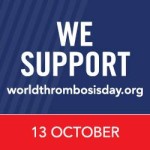
Get a Shirt, Raise Awareness, WeBleed Will Donate to the Platelet Disorder Support Association
September 8, 2014; Posted by: WeBleed Staff
WeBleed announced this morning that we will donate all of the proceeds from sales of ITP related shirts from our gift store to the Platelet Disorders Support Association (PDSA) in honor of ITP awareness month.
Currently there are two ITP designs available in the WeBleed online store. The popular “Eye Teepee” tanks and sweatshirts (pictured above) and the “Spleen – Who Needs It?” (below) shirt for individuals who are awesome enough to have had an organ removed and still be kickin’ it here on God’s green earth.
Both shirts are great conversation starters that’ll help you spread the word about ITP being “the most common bleeding disorder unknown to most.”
More designs to come over the course of the month.
Please share with your friends and family and help us send a big check to PDSA!!!
About ITP, from PDSA’s website:
ITP, immune thrombocytopenia (also known as immune or idiopathic thrombocytopenic purpura) is an autoimmune disease. In autoimmune diseases, the body mounts an immune attack toward one or more seemingly normal organ systems. In ITP, platelets are the target. They are marked as foreign by the immune system and eliminated in the spleen, the liver, and by other means. In addition to increased platelet destruction, some people with ITP also have impaired platelet production.
A normal platelet count is between 150,000 and 400,000/microliter of blood. If someone has a platelet count lower than 100,000/microliter of blood with no other reason for low platelets, that person is considered to have ITP.1 There is no accurate, definitive test to diagnose ITP.
With few platelets, people with ITP often have bleeding symptoms such as spontaneous bruising, petechiae (pe-TEEK-ee-ay), tiny red dots on the skin, or for women, heavy menses. More severe bleeding symptoms include blood blisters on the inside of the mouth, blood in the urine or stool, or bleeding in the brain.
Treatments for the disease vary depending on the platelet count, severity of symptoms, age, lifestyle, personal preferences, and any other associated diseases. Some people may choose to not treat their disease and live with low platelets.
While it may seem like ITP is a simple disease, there are nuances to the diagnosis, differences in the disease between children and adults, and variations in how the disease responds to treatments. The pages in this section provide more details to help you or your loved one manage the disease.




